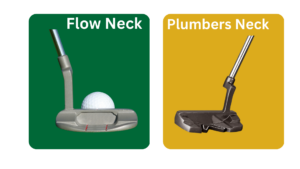
When you’re just starting off in the world of golfing, it’s easy to get discouraged. With so many tips, tricks, and techniques to memorize, catching up to professionals seems like a long, tiring journey.
If you’re struggling to perfect your swing, you’re in the right place. In this article, we’ll discuss some of the best golf swing tips that’ll surely help you with your game.
8 Indispensable Golf Swing Tips For Beginners
As follows are some of the best golf swing tips, brought to you by long-time hobbyists and professional golfers.

Tip #1: Don’t Rush
One of the first mistakes amateur golfers make is rushing through the game. Some golfers swing as hard and fast as possible to reach a significant distance from the get-go. However, this practice tends to do more harm than good. Professional golfers recommend gradually developing your swing’s speed until the golf ball reaches its desired destination.
If you’re still perfecting your golf swing, take a bit of extra time to develop a smooth transition. Don’t shift from backswing to forward swing in an attempt to hit the golf ball as far as you can. Doing so increases the risk of a faulty transition, with the slice being the biggest issue you may encounter when you rush at the top.
For those who aren’t aware, a “slice” is a type of golf shot that causes the ball to curve significantly during a flight from left to right. For left-handed golfers, the slice curves from right to left. Some professionals intentionally use the slice as a part of their technique, but since it’s quite difficult to control, it’s usually a result of a mishit.
Avoid this by starting off with an extra-slow transition with some soft wedge shots. Keeping your transition slow not only warms you up but also helps you get a feel of your golf swing as the game goes on. As your golf swing gets faster, it’s worth keeping track of your transition so you don’t unintentionally go from slow to fast.

Tip # 2: Decide Where You Want Your Golf Ball to Land
Before taking a stance and hitting your golf ball, pick out a specific target and commit to where you want it to land. Do so regardless of the shot you’re hitting. You don’t want to look indecisive during a game; indecision leads to doubt, and doubt often leads to self-sabotage and failure. If you’re just hitting the golf ball with no target in mind, you’re not fully controlling the game.
Most golfers pick out a target when they’re hitting an approach shot, but this isn’t enough to win a game. Aiming ‘for the fairway’ before swinging at random might ruin your chances of winning the game. As far as target selection is concerned, it’s always best to pick out a specific target in the distance and use the said target as a guide for your swing.
This strategy is especially useful for beginner golfers. Once you get used to it, you’ll start to do it unconsciously. Your confidence and commitment with your swings will likely increase, plus you’ll be able to adjust your shots and get a feel of the field. In a golf course, the mind is as powerful as your swing.

Tip # 3: Mind Your Grip
Your swing is directly connected to your grip. It’s one of the biggest determining factors to your game’s success. Without a proper grip, you won’t be able to gauge how straight your golf shots fly. For best results, make sure your grip is in a neutral position. Keep it relaxed, but not too relaxed. A weak grip may cause the golf club to slip from your hands or may potentially lead to the ever-dreaded slice shots. Gripping too tightly may potentially lose your golf swing’s power.
Everyone has their own way of holding onto the golf club. A ‘weak’ grip can be another golfer’s ‘neutral’ grip. For this reason, the ideal grip can only be dictated by the golfer himself.
This is where practice comes into play. Work on finding the pressure that’ll allow you to swing freely without giving up control over your golf swing. Regardless of the strength you use, keep your grip relaxed as it promotes speed and a clean strike.

Tip # 4: Use Your Body, Not Your Arms
Beginner golfers often use their arms when swinging their clubs. However, long-time golfers know that power doesn’t come from the arms, but from the body. It’s quite similar to throwing a ball or a frisbee; power starts from the core of your whole body rather than just a part of it.
If you’re used to using your hands to control the golf club, you may find it difficult to sync your body and arms in the golf swing. However, with enough practice, you’ll be able to channel your body’s energy to your swing in no time.
When you swing your golf club, imagine yourself and the golf club as one entity. In other words, be connected on the swing. Your arms, hands, body, and club should all move together. If you’re not connected in that manner, you won’t be able to fully control your golf swing. Your golf ball might veer off track or may not have the speed it needs to make it to the area you want it to land.
For a detailed step-by-step guide, this instructional video by Chris Ryan showcases how to effectively use your body for more power.

Tip # 5 Check Your Stance
Even if you channel your entire swing force through your body, you won’t achieve enough without the proper alignment. This is why stance is so important.
Make sure your shoulders, hips, feet, and golf club all follow the recommended athletic golf stance. Your legs shouldn’t be locked or squatted. In your initial setup, pressure should be focused on the lead foot. You can do so by bumping your hips slightly forward. Ideally, your weight distribution should follow a 60/40 split at address, but you can move that up or down as needed.
Depending on the golf club you use, your stance should be about a shoulder-width apart. Your lead arm (left for a right-handed user, right for a left-handed user) should be raised slightly above your trial arm. Consequently, your trail shoulder will move lower than the lead shoulder as you swing. This helps the golf ball turn over and draw as the club path moves up and to the right.
If you’re struggling with accuracy, you might need to work on extending your right arm as it reaches the ball. This action helps create contact with the ball and keep everything lined up. It also allows you to put more power into your shots as it prevents your upper body from getting ahead of the ball.

Tip # 6: Play By Your Strengths
Every golfer, beginner or otherwise, has their own strengths and weaknesses. Ignoring your weaknesses, as tempting as it might be, may potentially cost you your game. Even professionals have their weaknesses, so it’s no shame in avoiding them whenever possible. Knowing what you can and can’t do helps you make decisions based on your strengths rather than your weaknesses. If the shot is too tricky or way above your capabilities, it’s best not to execute them just to prove you can do it. That’s what practice is for. On the golf course, a small mistake could be the end.
Before hitting your shot, ask yourself the following questions: what target are you going to use? Do you want to hit the ball further, or straighter? Higher, or lower? What is your go-to shot? Where do you most commonly miss? These questions need to be answered before taking your stance. Playing by your strengths helps you achieve better outcomes in the end and increases your chance of winning.
With enough practice, you’ll eventually get better in your weak areas. When that time comes, you’ll be able to utilize the new techniques you’ve learned in the course.

Tip #7: Learn How to Hit Crisp Iron Shots
Beginners often fail crisp iron shots because of two reasons. One, the takeaway is too low on the ground, resulting in improper hinging of the wrists. Two, the golfer’s arms swing too far in a misguided effort to create power, which causes a breakdown in posture and leads to a reverse pivot. Both flaws result in a lack of distance and control, as well as mis-hits.
Luckily, it’s relatively simple to gain control over the length of the golf swing to create more solid contact. When professionals hit a crisp shot, the low point or divot of the iron swing should be in front of the ball rather than behind. Before you swing, make sure your left arm and the club shaft are at a 45-degree angle at setup. Your wrists should be hinged halfway to 90 degrees. Keep your hands close to the ground while the clubhead quickly moves up. Ideally, your left thumb should point at your right shoulder as soon as your club shaft is perpendicular to the ground and your left arm is parallel to it. This, therefore, eliminates the need to swing your arms too far at the top and instead sets the wrists much earlier in the backswing.
Knowing how to properly hinge your wrist in the backswing helps you strike your ball better and consistently distance and direct your iron shots.
If it’s your first time using a tempo, start by counting much slower than you normally do before improving your speed. This allows you to get used to the idea of a 3:1 tempo. This drill is great for home practice as it’ll doesn’t require a club or ball to do.

Tip # 8 Master Your Tempo
Swing tempo is what separates pros from amateurs. Professional golfers like Freddy Couples, Rory McIlroy, and Tiger Woods have perfected their golf swing tempo to a T. The right swing tempo is all about getting the ideal tempo of 3:1. For instance, if your backswing takes three seconds, your downswing should only take one second. This timing creates the perfect balance of acceleration and impact.
You can also use the four-second method. When you start your golf swing, count ‘1’. When you reach the top of your backswing, count ‘2’. At impact, count ‘3’. And, finally, count ‘4’ when you reach a balanced finish.
Mastering your tempo allows you to generate enough power on your way down.

How Can I Make My Golf Swing Better?
If you want to make your golf swing better, you’ll have to properly adjust your stance, position, and grip, as stated in the tips above. Keep your shoulders, hips, knees, and feet parallel to the imaginary line that leads to your desired target. Also, it’s worth developing a pre-shot routine to ensure your ball is aligned between the left heel and the center.
At the end of the day, the best way to make your golf swing better is to practice. If you aren’t hitting the ball like you want to, or simply seem to struggle with your body alignment, go back to your favorite club and practice different shots so you’ll get used to swinging. Practice also prepares you for when things aren’t going according to plan.
Practice your swing as often as possible. While doing so, don’t forget to adjust any issues that you notice with your swing so you’ll be able to fix them.
What Is the Best Golf Tip Ever?
There’s no single best golf tip. There’s a ton of great information floating around the internet and sports media, from keeping a smooth rhythm to swinging your golf club like a mallet. Some golfers find the universally helpful advice of “stop thinking too much” quite helpful, too.
Different tips work for different players; the goal here is to find the advice that best suits you and your play style.
PGA head golf professional Ryan Peterson states that his top five golf tips are as follows:
- To achieve better distance control and more consistent ball contact, your full swing should not go over the 80% mark.
- Transfer all your weight to the left side, drive your legs towards the target, and have a good hip turn.
- Your shoulders, hips, knees, and feet should all line up parallel to the target.
- Don’t grip your club in your palms. Instead, it should be placed in the fingers of both your hands.
- Create a consistent tempo for better distance control.
What Is the Secret to the Golf Swing?
Golfers are constantly on the hunt for tips and ‘secrets’ to improve their game. Unfortunately, like most sports, there’s no shortcut or miraculous secret to becoming a pro. My advice? Focus on the fundamentals before anything else. Once you achieve proper stance, good posture, and the right grip, you’re already on your way to becoming a good player.
What Is the Proper Way to Swing a Golf Driver?
For starters, position yourself in a wide stance and place your golf ball off your front foot. Set your hands back at the address and hold the club comfortably. Your hands must form a “V”. Rotate your entire upper body beginning with your shoulders and shift your weight to the back foot. Prevent swinging inside-out by keeping your arms away from your body. Then, create your downswing by shifting your weight from your right foot to your left foot. This creates power from your lower body. Finally, finish your shot by extending your arms through the shot’s impact.
Takeaway
Golfing is a sport that’s full of helpful tips and tricks. While there’s no magic move that’ll suddenly get you to swing like a pro, there are a number of golf swing tips that’ll instantly improve your game. Coupled with enough practice, the tips above will help you become a great golfer over time.






